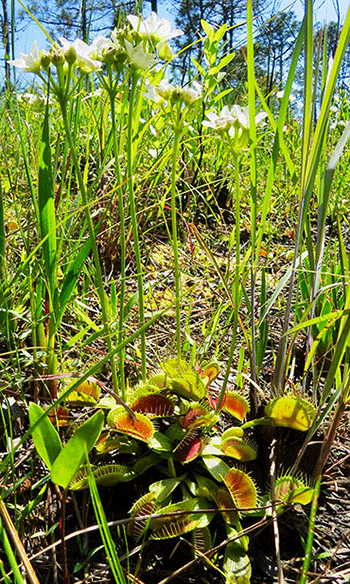Author: Sarah Zielinski / Source: Science News for Students

A Venus flytrap requires a pollinator to make seeds and reproduce. But who those pollinators are have long remained a mystery. One reason: Scientists and gardeners tend to focus on the carnivorous plant’s clever traps.
Now researchers have finally looked at which species visit the plant’s delicate white flowers. And they’ve found little overlap with species that serve as the plant’s meals.There are hundreds of species of carnivorous plants found across the planet. Few, however, attract quite as much fascination as the Venus flytrap. The plants are native to just a small section of North Carolina and South Carolina. But these tiny plants can now be found around the world. They’re a favorite among gardeners, who grow them in homes and greenhouses.
Although scientists have extensively studied the famous trap, they’ve largely ignored the flower that blooms atop a stalk 15 to 35 centimeters (9 to 14 inches) high. That means they’ve also largely missed seeing what pollinates that flower.
“The rest of the plant is so incredibly cool that most folks don’t get past looking at the active trap leaves,” says Clyde Sorenson. He’s an entomologist, or insect biologist, at North Carolina State University in Raleigh.
Because flytraps grow in such a small area of the Carolinas, field studies can be difficult, adds Elsa Youngsteadt. She’s an insect ecologist, also at NCSU. And there’s another problem when studying flytrap pollination.
Most people who raise these plants cut off their flowers. Why? It helps the plant put more of its energy into making traps.Sorenson and Youngsteadt realized that the answer to what pollinates these flytraps was sitting almost literally in their backyard. So they started sleuthing.
Tallying pollinators and prey
Their team collected flytrap flower visitors and prey on four days in May and June 2016. All came from three sites in Pender County, N.C.

“This is one of the prettiest…
The post Venus flytraps tend not to eat their pollinators appeared first on FeedBox.